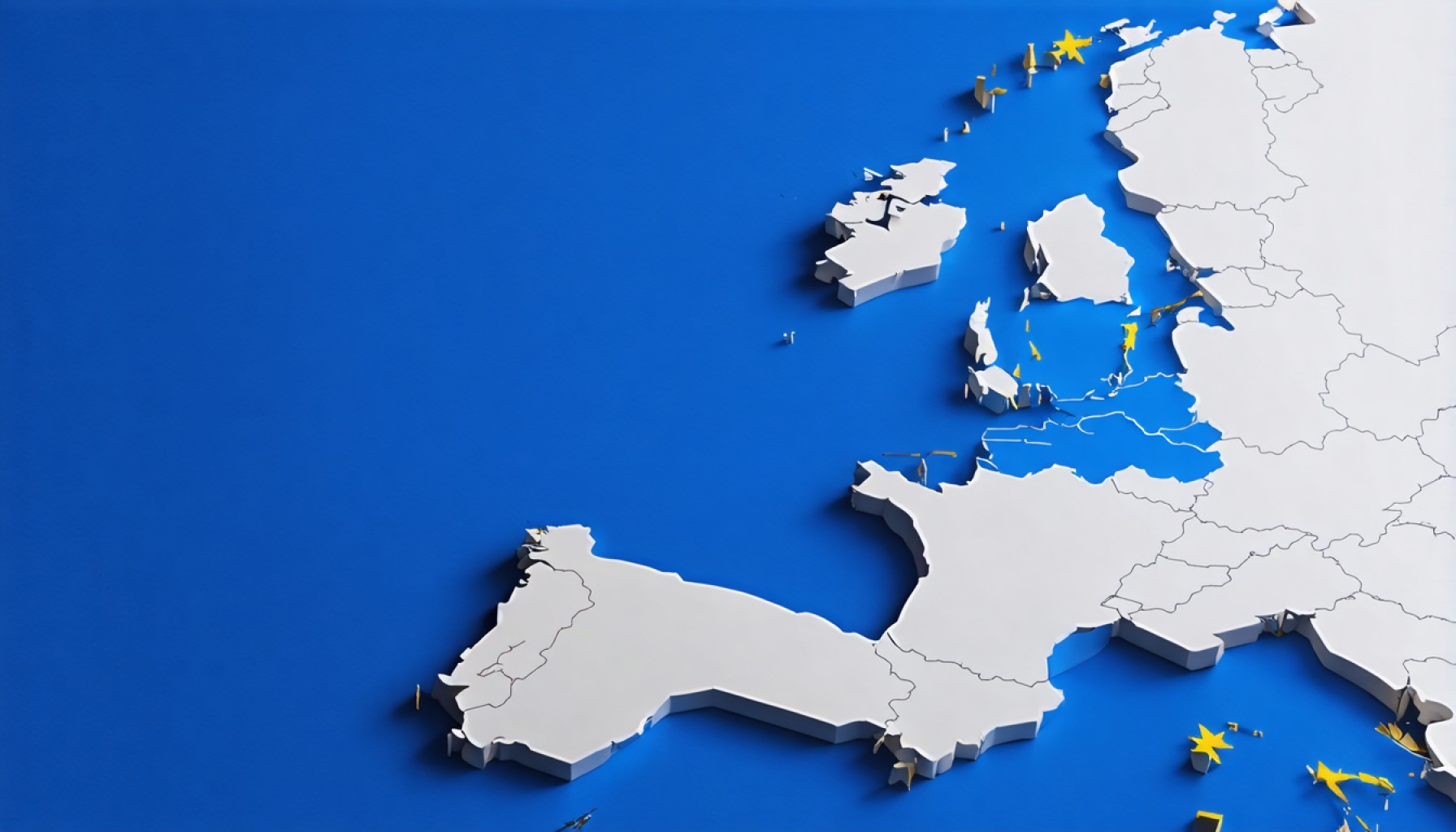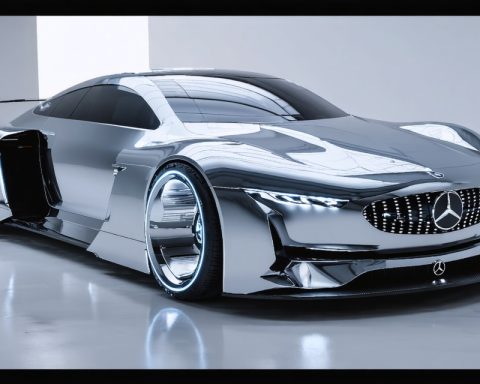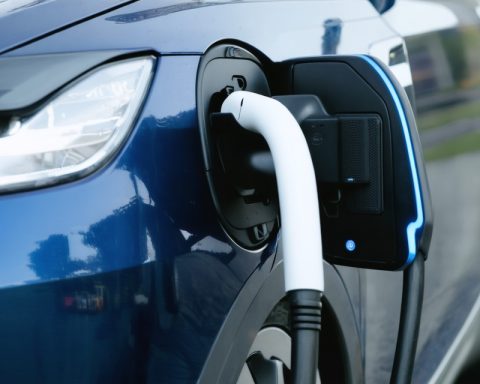- China and the EU have agreed to resume negotiations on the EV anti-subsidy case, potentially reshaping global trade dynamics.
- This move aims to reduce trade tensions and promote industrial cooperation in the rapidly growing electric vehicle market.
- The rekindling of talks could enhance tech collaboration, boosting innovation and efficiency in EV production across both regions.
- European companies may gain increased access to the Chinese market, while China’s advancements in battery technology could benefit Europe.
- The initiative reflects a shared commitment to sustainable transportation solutions as a means to combat climate change.
- The agreement underscores the importance of transparent policies and mutual growth as critical to achieving clean transportation leadership.
- This partnership symbolizes a new era of global collaboration driven by common environmental goals.
The air crackled with anticipation today as China and the European Union took a bold step towards reshaping the future of electric transportation. At exactly 3 PM, the Ministry of Commerce in Beijing became the stage for momentous news destined to reverberate across continents. In a move that could redefine global trade dynamics, China and the EU have agreed to swiftly rekindle negotiations surrounding the electric vehicle (EV) anti-subsidy case.
In recent years, the burgeoning electric vehicle market has ignited fierce competition, spurred on by ambitious pledges for green transitions. Yet, tariffs and subsidies have sparked tensions, threatening to overshadow the shared climate goals. Against this backdrop, today’s announcement signals a refreshing wind of diplomacy aimed at fostering a healthy investment climate and industrial cooperation between two of the world’s largest economic juggernauts.
The surroundings of the Ministry brimmed with a blend of hope and pragmatism. Observers noted that this rekindling of negotiations might not only smooth the prickly trade relations but also provide a platform for tech collaborations, heightening innovation and efficiency in EV production. For European companies, it presents a golden opportunity to delve deeper into the vast Chinese market, while China’s innovative prowess in battery technology could soon energize European roads.
Echoing deeper into the core of this agreement is the shared acknowledgment of a pressing need—the push against climate change through sustainable transportation solutions. By revisiting the pricing commitments that underpin the subsidy discord, both sides aim to dismantle barriers and accelerate the development of smarter, more sustainable electric vehicles.
The strategic navigation of these waters is crucial. A misstep could lead to escalated tensions, effectively dampening a promising era of clean transportation leadership for both regions. However, today’s dialogue reflects a commitment to avert such outcomes by nurturing transparency, trust, and mutual growth.
As the sun set on the Ministry, one takeaway emerged—it was more than a deal about vehicles. It was a pact of progress, a testament to global partnership in the face of competitive challenges, and an emblem of hope for the electric future.
In a world where climate imperatives can no longer be ignored, the harmonization of industry policies between China and the EU might just be the catalyst needed to spark a greener path forward—a beacon of innovation guiding humanity towards sustainable horizons.
China-EU Electric Vehicle Trade Talks: A Green Beacon Shaping the Future of Global Markets
Understanding the Significance of China-EU EV Negotiations
In the rapidly evolving landscape of electric vehicles (EVs), the recent rekindling of trade talks between China and the European Union (EU) marks a watershed moment. Beyond the immediate implications for trade dynamics, this diplomatic rapprochement could have far-reaching effects on global EV innovation, market competition, and sustainability goals.
Insights and Predictions
1. Market Forecasts & Industry Trends:
– Global EV Market Expansion: The collaboration between China and the EU is anticipated to drive significant growth in the global EV market. According to market research firm Statista, the global EV market size is projected to surpass $800 billion by 2027, with joint collaborations potentially accelerating this growth.
– Technological Advancements: China’s expertise in battery technology combined with Europe’s advanced automotive engineering could lead to rapid advancements in EV efficiency and range, thus enhancing the market appeal of EVs globally.
2. Real-World Use Cases:
– Shared Technological Advancement: Chinese battery technologies are already pioneering high-capacity and rapid-charging solutions. Integrating these technologies into European automotive systems could provide real-world applications like long-range buses and commercial vehicles, improving public and private transportation.
– Co-development of Charging Infrastructure: Both regions could collaborate to standardize EV charging infrastructure, enhancing cross-border compatibility and paving the way for increased EV adoption.
3. Security & Sustainability:
– Sustainable Manufacturing: This agreement could catalyze a focus on sustainable mining practices and recycling methods for EV batteries, crucial for environmental sustainability.
– Cybersecurity Protocols: With increasing connectivity in EVs, ensuring cybersecurity will be critical. Collaborative efforts could establish robust guidelines to protect against potential threats.
Addressing Pressing Questions
– How will this affect global supply chains?
Global supply chains could see increased efficiency and reduced costs as the synergy between China and the EU enables shared resources and technology. This could lead to more competitive pricing models globally.
– What are the potential controversies?
While the collaboration is promising, there are potential concerns regarding intellectual property rights and the strategic balance of power that need careful navigation to prevent economic or political disharmony.
Actionable Recommendations
– For Investors: Keep an eye on emerging joint ventures between Chinese and European firms, as these may offer promising investment opportunities.
– For Policymakers: Consider developing frameworks that facilitate international collaborations while localizing key elements of EV technology to boost domestic innovation and job creation.
– For Consumers: Expect more choices and competitive pricing in the EV market as companies leverage international collaboration to innovate faster.
For more insights on global trade dynamics and market opportunities, visit the official pages of European Union and Ministry of Commerce of the People’s Republic of China.
In conclusion, as China and the EU move towards a more collaborative relationship, the potential positive outcomes are significant. By fostering innovation, addressing climate change, and creating a robust green economy, this rekindling of negotiations sets a hopeful precedent for global progress toward sustainable transportation.















